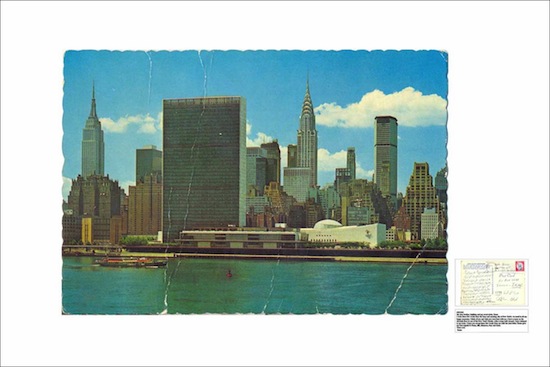I got a compliment for my first "Survive" article (for Huff Post) yesterday, from Tehran. I was grateful, and as I began to explore this person's links, I found an accomplished conceptual artist whose work goes to the heart of what it means to be an artist, to be free, to express independently within an incredibly restrictive society.
We conversed on a famous social network that is forbidden in Iran, and so Hadi and I conversed through the early morning hours of Tehran via a proxy network. When I realized it was 4 a.m. there, he said "No problem, my sleep should wait when we are talking about art." Ironically, I'm sure that it's recorded somewhere on one of our NSA servers now.
His name is Hadi Fallahpisheh, and his most recent work is called US Prime, and was exhibited at the Maryam Harandi Gallery in Tehran in 2012. The title refers to us, as in both U.S. and Iran -- as people. And Prime, as in prime symbol, which is used to generate more names for things that are similar, according to Wikipedia. U.S. Prime as a work creates an understanding of the concept in several ways.
Hadi discovered some postcards from the late 1950s and early 1960s in which members of an Iranian family write home about the U.S., expressing their impressions of the U.S. from famous places like the Grand Canyon, San Francisco Bay Bridge at sunset, Chicago's skyline, and the General Assembly Hall of the United Nations, and somewhat out of the way places such as a YMCA building in Des Moines, Iowa, and the Bull Shoals Dam in the Ozarks. The cards are blown up big, supplemented with the actual backs of the cards translated into English.
These often happy impressions are laced with longing for home and family. Hadi "bought them off an old woman who was selling her used furniture". She was the mother of the people listed in the postcards.
Photography by Hadi Fallahpisheh
The postcard reads:
UNITED NATION HEADQUARTERS
6/8/1964
My dear brother, Irajkhan and my sweet sister, TuranI write these few words from the busy and amazing city of New York's. As usual in all my happy moments, I think of you and wish you were here with me. I have a room on the eleventh floor in one of the New York's Hotels. After a long walk around, I have returned to my room. I hope you accept these few words from me until the next letter. Please give my best regards to Puran, Elli, Mansoor, Pary and Kami.
Yours ever
Nader
Take a moment to look at the rest of the postcards here. U.S. Prime.
These alone would provide an interesting show, but there's much more to the show than that, including some other historical commentary in the form of an assembled sculpture called "Oh Love Die". There's a fireplace built into the gallery. An old American doll stands in front of it, lifting up its arm toward the fire, rhythmically sprinkling oil on it, briefly expanding the fire.
Click to view the Installation.
There's a video that has been shown here in the U.S., at Artist's Television Access in San Francisco, also called "Conquest of Paradise", which depicts a basketball net and backboard painted with red and white stripes. Blue and white basketballs are launched from a building in the right image, and land in the left image, and into the net, alternately bouncing around and swishing cleanly through. The ball scores every time.
Click to view "Conquest of Paradise".
"I want to make something like America's flag... the red lines on white board and blue stars... blue stars which fly to the boards and make a flag..." Hadi Fallahpisheh
American cars were very popular in Iran until they were banned shortly after the Shah was overthrown by the revolution that started with the hostage crisis of 1979. A second video, a found object Hadi bought from his landlord, expresses the love a family had for their Ford. The father asks the son to film the car from a hill as it transports the family on a pilgrimage to Mashhad. (Mashhad is a legendary artists city.) The pride the son had in his father's car is palpable in the narration he provides as he's filming. You can almost hear him smiling as he talks.
Click to view US Prime, 8mm film.
"My favorite car is Buick Century 1974 -- when I was eight years old, my uncle had this car." Hadi Fallahpisheh
The relationship between the Iranian and American people is a long and checkered one, but there is every reason to hope that the estrangement between our governments can be worked out to the benefit of both sides, that is, if the people have anything to say about it. I told Hadi about an Iranian friend who lives here who is constantly joking about America. Hadi asked me if he told me any jokes about Iran. I said no, so Hadi told me one:
"The bad news is Iran is capable of making a nuclear bomb. The good news is they have to drop it from a camel." Popular Iranian Joke
Humor and irony, truthful commentary -- free expression -- is something people all over the world strive for. America, and it's flag, is freedom's greatest symbol. Let's savor it, enjoy it, and hope that we can live up to its original meaning both as people and as a society. It's up to us as people to protect these principles. And to remember how lucky we are.
Hadi is applying to Yale to study photography, and is working on a new project about jeans.
